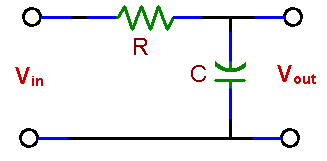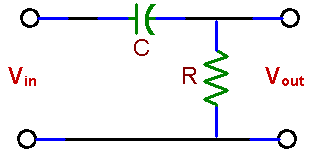|
LABORATORY VI RC CIRCUITS; PASSIVE FILTERS OBJECTIVES To measure and analyze the time response of an RC circuit to a step voltage. To measure frequency responses of low-pass and high-pass RC circuits and plot frequency response graphs (Bode plots) of the amplitude and the phase. INTRODUCTION In this set of experiments we will explore perhaps the most important electrical circuits. Although they contain only two elements, a resistor and a capacitor, they model the behavior of much more complex circuits and devices. Capacitance and resistances are present in every electrical circuit, whether they are placed there on purpose or are the unavoidable consequence of the fact that every component or connection has some resistance as well as capacitance. These characteristics will ultimately define the device performance. For example the building block of digital circuits, the MOS transistor, has both resistance and capacitance which limit the speed of this device. Coupling capacitors are used between circuits which have their own internal impedance and thus form filters which may limit the frequency response of the whole system. In short: good knowledge of RC circuits is essential for anyone who wants to understand analog or digital electronics. The experiments will demonstrate the effects of filters on sinusoidal signals, the dependence of the output voltage on frequency. Because any other waveform (such as a square wave) can be represented as a superposition of sinusoidal signals, this frequency dependence results in distortion of the shape of those signals. PRELAB 1. What is the response of a simple low-pass RC filter (fig. 8 a) to a square-wave input? How will you measure the time constant (t = RC) of this circuit using an oscilloscope? Hint: Vout is a voltage across a capacitor C which is charged and discharged from a source Vin through a resistor R. The scope gives you this voltage as a function of time. 2. Draw approximate frequency responses for circuits (a) and (b). Indicate the filters characteristic frequency, called also the break frequency or the corner frequency. At that frequency the power drops to ½ of the power in the filter pass-band. Since the output voltage drops then by 3 dB, the frequency is also designated as f -3db. How does this frequency depend on R and C?
|

